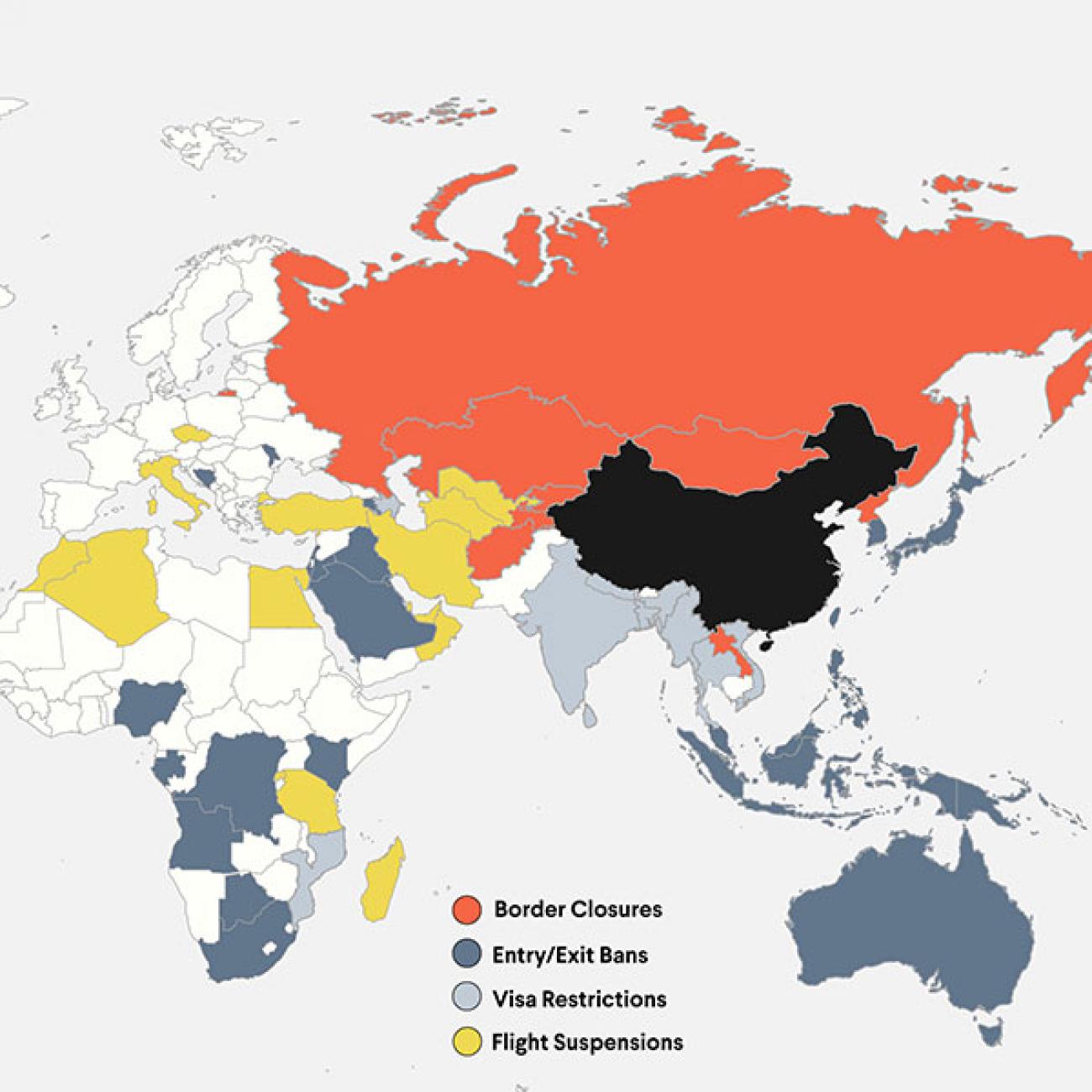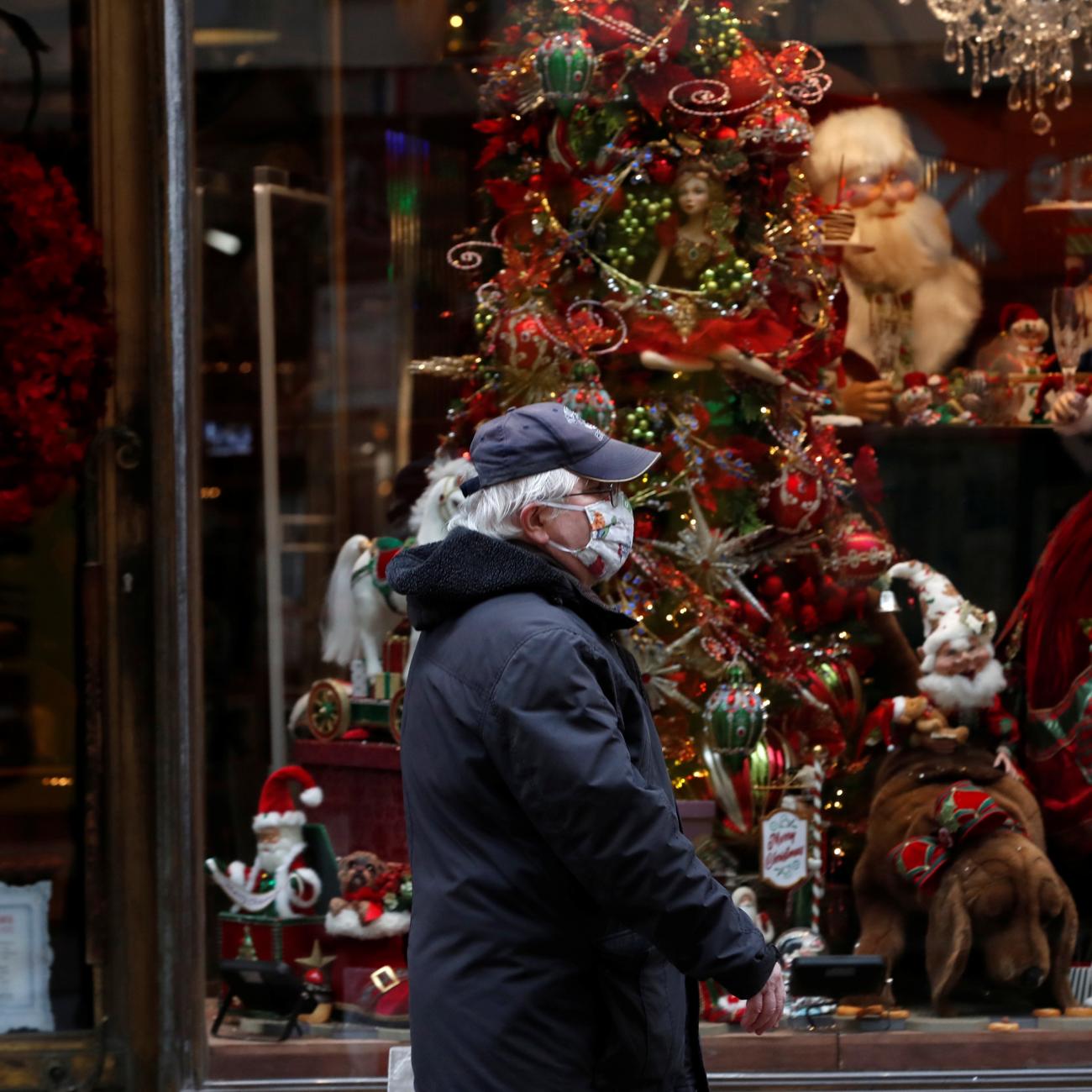There is no place like home for the holidays, or so goes the famous Christmas song. While the tune was not written as public health advice, with soaring COVID-19 cases, deaths, and hospitalizations across the United States, its message may be more important than ever this holiday season, at least regarding health and safety.
The period between Thanksgiving and New Year’s Day tends to be the one of the busiest travel times of the year, with families, friends, and loved ones coming together to celebrate religious and non-religious holidays alike. As new daily COVID-19 cases approach 200,000 nationally, daily deaths reach levels not seen since the spring, and hospitals around the country near max capacity, this year’s holiday travel brings unique risks.
On the weekend before Thanksgiving, there were almost 60 percent fewer U.S. air travelers than in 2019
For the first time, the U.S. Centers for Disease Control and Prevention (CDC) has issued an unambiguous warning against holiday travel: gatherings with family and friends outside of one’s immediate household can increase the chances of getting or spreading COVID-19. Accordingly, the CDC has recommended that Americans who do not currently live together embrace virtual gatherings, rather than in-person celebrations. If followed, these guidelines would prevent returning college students, children, siblings, parents, or friends residing in different cities or even different houses from gathering together.
The good news is that when comparing 2020 holiday air travel to past seasons, traffic is at its lowest levels in recent years. On the weekend before Thanksgiving, there were almost 60 percent fewer U.S. air travelers than in 2019, with many Americans heeding the warning to stay off the road and out of the sky. However, the outlook is not all sunny.
During the same weekend, air travel reached its highest levels since March 16, 2020, when President Donald J. Trump issued warnings against discretionary travel [PDF]. Almost five million Americans have taken to the air since last Thursday, and more than 130 airports have recorded COVID-19 infections among Transportation Security Administration (TSA) employees in just the past month. Additionally, an estimated 47.8 million Americans are expected to travel by road, creating serious concerns that the holiday season may accelerate already surging rates of COVID-19 infection.
Almost five million Americans have taken to the air since last Thursday
Unfortunately, the research on COVID-19 transmission and air travel is relatively scarce. Indeed, some have argued that the risk of COVID-19 transmission may not be as high on a plane as in other common locations, such as in the workplace or restaurants, and the International Air Transport Association has determined the risk of in-flight transmission [PDF] to be low. However, the risk certainly does exist. The existing literature has found the novel coronavirus can be transmitted on airplanes, particularly when passengers forego masks, flights are long, social distancing is not maintained, and air circulation is insufficient. The CDC, for instance, has identified long-haul flights that saw COVID-19 clusters among passengers seated near each other and found evidence of transmission occurring between sick passengers and flight attendants. And currently, only one major U.S. airline, Delta, has committed to keeping airplanes’ middle seats open throughout the 2020 holiday season.
Air travel is also far more than simply sitting on a plane for a few hours. Passengers, both healthy and sick, come into contact with countless individuals as they get to and travel from airports, undergo TSA screening, and board and deplane. In many situations, close contact cannot be avoided, air flow is limited, and social distancing is difficult to maintain. Additionally, TSA officials, airport staff, and flights attendants may each come into contact with hundreds of individuals on any given day. And their infection rates have doubled since October. Such conditions, even when everyone is masked, are undoubtedly riskier than staying home.
The amount of COVID-19 transmission driven by asymptomatic or presymptomatic individuals
Also of concern is the risk of spreading COVID-19 to new areas once passengers arrive. Unfortunately, targeted screening measures have been ineffective at identifying infected passengers and thus preventing the spread of COVID-19 to new areas so far in this pandemic. With much of the country regarded as virus “hot spots,” COVID-19 test wait times nearing one week in some places, and asymptomatic or presymptomatic individuals accounting for nearly 50 percent of all COVID-19 transmission, the reality is that sick passengers will be taking to the air and the roads. And many will likely have no idea they are bringing the virus with them.

Unfortunately, despite the obvious risks and clear warnings from federal officials, Americans are not staying home for the holidays. As cases rise and travelers spread the virus throughout the country, health systems and federal, state, local, and tribal officials should remember that with this virus, increases in deaths lag behind increases in cases by about three weeks. That means a Thanksgiving surge, driven by the first wave of holiday travel, will hit just before Christmas, likely bringing a wave of new COVID-19 deaths and hospitalizations for the New Year.
If travel is unavoidable, take all precautions possible to reduce the risk of COVID-19 transmission: mask up, limit contact with others, sanitize frequently, and avoid gathering in states with the highest levels of transmission. For those that have yet to get on their way, it is not too late to avoid crowded airports and roadside rest stops. Unless Americans plan to stay put or, at the very least, travel safely, they risk taking COVID-19 home for the holidays.








